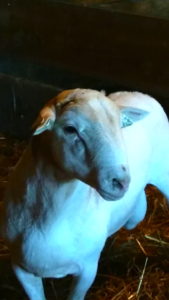
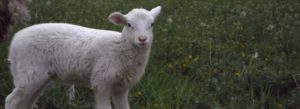
If we are what we eat, most of us are fast, cheap, and easy. Let's change that!
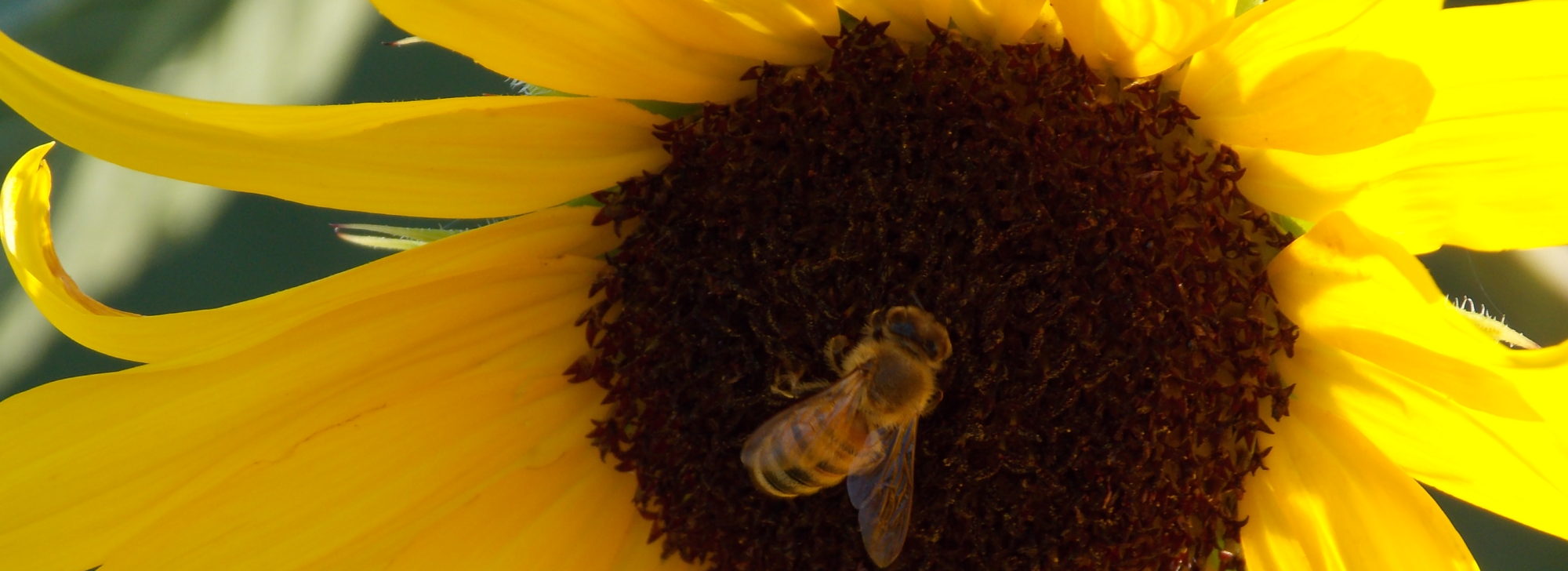


New calves, kid goats and lambs
When there are new calves, kids or lambs the entire herd likes to check out the newest members. The bull calves and 'freemartin' bull calves are wearing red tags this year, the heifer calves have yellow tags.
Sorting Sheep
Some friends called and asked if they could stop by on their way home from picking up their new puppy, of course they could. I love my friends and puppies. The eight week old pup explored the yard. She ran from a curious hen, chewed on everything she found, and then fell asleep on a blanket in the car.
As they were getting ready to leave the couple looked at each other with curious expressions. Through a few not so subtle head nods and eye rolling maneuvers they finally asked the question I suspect was the real reason for their visit.
“Could you tell us if we have a male or female puppy?”
“Really, you can’t tell?” I started to laugh, “It’s a girl.”
The were relieved, they’d wanted a female. The confusion came from the puppies pot belly with a protruding naval stump.
We all laughed. Sometimes what seems obvious, isn’t.
My friend is not perfect - nor am I - and so we suit each other admirably. - Alexander Pope
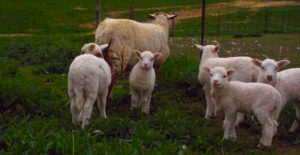 Lambing season is almost finished, just a couple of ewes to go. Keith leaned on the gate and looked over at me, “See that sheep over there. She’s never going to have lambs.”
Lambing season is almost finished, just a couple of ewes to go. Keith leaned on the gate and looked over at me, “See that sheep over there. She’s never going to have lambs.”
I looked at the sheep he was pointing at, “How do you know? She’s a healthy ewe, maybe she was just a late breeder.”
“Nope. It’s because she is a he,” Keith chuckled.
Sorting sheep is a big deal. In the fall we move the sheep through a series of pens to separate the females from the wethers (castrated males). Not only are the sheep separated into pens but they’re identified with livestock marking paint. Each sheep is cross referenced according to their ear tag. Throughout the sorting process each animal gets examined no less than four times as they move through the pens.
Despite this ‘fail safe’ system all four of us misidentified him. I looked at Keith and laughed, “Really, you can’t tell it’s a boy.”
What seemed obvious, wasn’t.
Here's more information on organic grass-fed lamb
Cussing is Livestock Abuse... what?
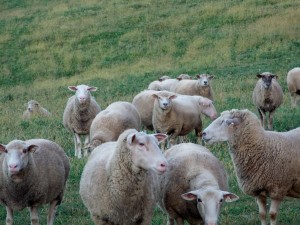
"Hey, ewe are they swearing at us?"
People for the Ethical Treatment of Animals (PETA) issued a formal complaint to the Royal Society for the Prevention of Cruelty to Animals (RSPCA) in Australia that sheep are offended when sworn at.
One of PETA's volunteers recorded this abuse while working undercover at a sheep station in New South Wales.
The rancher, Ken Turner said, “To my knowledge there was no actual cruelty on the job. The allegation was that bad language was used by an employee on the property in front of the sheep and that they could have been offended by the use of bad language.”
RSPCA in New South Wales chief executive Steve Coleman says the complaint was rejected, but not because it was bloody stupid in the first place. He said the video footage was ruled “not legally usable.”
Having worked with both sheep and goats for over twenty years I confess to cussing, in their presence, on multiple occasions. Especially when I find them eating the apple trees and running through the garden.
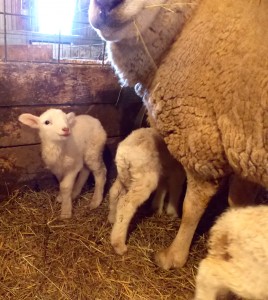 The joke's on me.
The joke's on me.
I love April Fool's day. I enjoy playing pranks on my family. This year I had an elaborate stunt planned. I got some fleece material, some boards and decided to make a flock of baby lambs. I was going to dot the hillside with my fake lambs, placing them near our ewes. From the kitchen window it would look like we'd had an overnight windfall of new births. Before Keith goes outside for morning chores he always looks out the window to check on the livestock. He likes to see where they are. Well, Mother Nature beat me to it this year. On Sunday, when I checked on the livestock for the night, four new lambs were milling around with four ewes fussing over them. Getting them inside the barn was easy, but then we had to sort them out. Through careful observation of their behavior we figured out which lamb belonged to each ewe. One ewe had twins, two others had a single lamb. The odd ewe, without any lambs, followed us inside, too. Half an hour later she delivered triplets. Once they were all fed and bedded down we checked on the outside ewes again. Two more were ready to lamb. So, my April fools day plan didn't go as planned. Mother Nature delivered real lambs instead. As of this morning twenty-one new lambs are in the barn. The joke's on me!
 Sheep Quiz
Sheep Quiz
See if you can answer these questions in our sheep quiz...
Q. Other than the farmer's name in the movie Babe, what is a hogget?
A. A hogget is a sheep between one and two years old. The first shearing of hogget wool is the best wool a sheep will ever produce.
Q. What mineral is toxic to sheep?
A. Copper. Sheep require trace amounts of copper. However, copper is toxic to sheep in larger amounts. Mineral supplements have to be specifically labeled for sheep.
Q. What does 'flushing' a ewe mean?
A. Flushing a ewe is done 10 days before breeding. She's put into the lushest pasture where she'll graze on legumes (clover and alfalfa). The high quality pasture causes her to release more eggs and increases the chance that she'll have twin or triplet lambs.
Q. What is the gestation time for a ewe?
A. 5 months (143-151 days) December breeding brings May lambs. Our ewes are bread in mid-November.
Q. Do Sheep have upper incisors ?
A. No. Sheep have 4 pair of lower incisors, but none in the upper jaw.
Q. What are two distinct differences between domestic and wild sheep?
A. Wild sheep have hair, domestic sheep have wool. Wild sheep, even ewes, have horns. Domestic sheep breeds are virtually hornless.
Q. Who produces the best 100% grass fed lamb, rich in CLA, Lutein, Omega 3, and grazed on certified organic pasture?
A. Forest Hill Farm! Grazed lamb is a healthy choice. Here's a delicious recipe, enjoy!
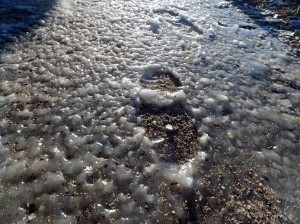 There was a warm up here last week. The thawing snow streamed down the lane exactly as it was designed to do, but made it into an icy raceway. It's covered in three-inches of thick ice which makes it hard to stay on your feet. Keith has ice cleats for his boots which leave tiny, little holes in the deck. They also leave tiny, little holes in the floor if you forget to take them off, but he doesn't forget. I don't have cleats because I always forget. So, I have two choices;
There was a warm up here last week. The thawing snow streamed down the lane exactly as it was designed to do, but made it into an icy raceway. It's covered in three-inches of thick ice which makes it hard to stay on your feet. Keith has ice cleats for his boots which leave tiny, little holes in the deck. They also leave tiny, little holes in the floor if you forget to take them off, but he doesn't forget. I don't have cleats because I always forget. So, I have two choices;
1) fall on my butt or 2) walk cautiously and scream “Get away from me!” when one of the dogs runs at me.
The dogs are curious when I'm walking soooo slowly. Today, in my frantic attempt not to fall I started flailing at the dogs and I knocked myself down. That's when, always practical Keith, came over to where I was lying and asked, “Why don't you go out the other door and walk through the snow so you don't have to cross the icy driveway?”
Looking up at him I realized he's much smarter than you could ever hope to be. The other door, huh, great idea.
Last fall I was worried about 049 and 005 slipping on ice because they're both fourteen now. They're both doing fine. They're following the sun. In the morning they stand facing east then move throughout the day soaking up the rays. The sheep aren't bothered by the cold. They haven't been shorn yet so their wool is thick and long. Because they'll begin lambing in mid-April they'll keep their fleeces until mid March. Hopefully it will be warmer by then.
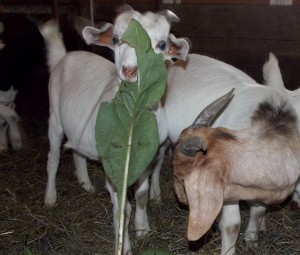
Goats are wonderful about eating brush, shrubs and weeds, but you have to control where they graze. I've tried to grow blueberries without success for the past several years. One year my friend mowed them down with his bush hog, he thought they were scrub trees. I replaced them. When they started to flower the goats escaped and ate them down to the ground. Again, I replaced them. Despite fencing them in, surrounding them with electric wire, and doing my best to protect them, the goats have ruined them several times. Once the goat problem was solved rabbits took over. But, I haven't given up, someday I'll grow blueberries.
Staking goats in areas with scrub brush and weeds eradicates the problem within a few days. We've remedied a giant rag weed crop and controlled burdock by grazing goats and sheep.
For a second year O'Hare International Airport, in Chicago will control brush by grazing goats and llamas grazing the 120 acres surrounding the airfield. The animals will eat brush, reducing and destroying the habitat of nesting birds and other wildlife which can cause serious danger to aircraft. The grazing will begin in August when the birds are finished nesting and beginning to migrate. When the birds return in the spring they'll find their nesting area destroyed. Without nesting space they'll relocate off the airport grounds.
In 1999 Carson City, Nevada experimented with grazing herds of sheep to reduce the risk of wildfires. They didn't continue the program until the benefit of grazing became evident. In 2004 a wildfire threatened the west end of Carson City, but slowed down when it got to the area where the sheep had grazed five years earlier. Carson City resumed the grazing program in 2006. Starting this April, 780 sheep and 900 lambs will begin feeding on Cheat Grass. They'll eat it down before it gets dries and adds dangerous fuel for wildfires.
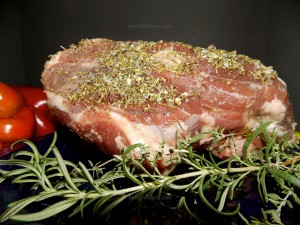
Omega 3 fatty acid is essential for human and animal health. It plays a vital role in boosting immunity, disease resistance, creating anti-inflammatory responses to infection, and reduces the risk of heart disease and blood clots. Leading British ruminant nutritionist Cliff Lister says, “Grass-based diets encourage lean muscle development rather than fat, meaning that grass-fed beef and lamb is typically leaner than meat produced from silage or grain-fed stock and contains a higher level of omega-3 fatty acids.”
Click here for Roast leg of lamb Recipe
Forest Hill Farm's lamb is 100% grass fed. The sheep graze in our organic pastures.
 |
| This is Spot, the lamb |
Spot is one in a family of triplets. He's still nursing from his mom but 3 times a day he's getting a bottle,too.
I feel like the barn door is a Pez Dispenser, every time I open it another lamb or calf pops out. So far, we've had a whole bunch of new lambs and 7 new calves this month. Chloe and Lulu each had calves so they're back in the business of giving milk. Alice and Clarice are due in May and June.
Our timing is a little off this year. We usually plan on having calves and lambs a couple of weeks before the pasture is ready. This year the snow cover is causing a delay but the added moisture is welcome.
Early next month chicks, turkey pullets, ducklings and goslings will come to the farm. Our turkey hens are going down the road to rendezvous with a friend's toms. After they've been with the tom the eggs will be collected and saved. Kept cool, not cold, the eggs remain fertile but inactive for two weeks. When the hens come home we'll put their eggs into the nesting boxes and let them hatch their own eggs.
A farmer in Iowa is making headlines. He's being hailed as innovative for saving on feed costs by feeding his cattle sawdust. Perhaps even more unbelievable is that University officials, and his veterinarian are giving a nod to the alternative feed. What in the world are livestock producers thinking? Won't they be surprised when no one wants what they produce.
The apple, cherry, and peach trees have been pruned. The garden is waiting anxiously for new seedlings and the rototiller is tuned up and ready to go. All we need now is better weather.
The lane from the barn to the house is an icy slope. Every day it thaws just enough for the snow to melt little rivulets down to the barn. Night time temperatures are just low enough to re-freeze the slope. This morning as I was carrying a basket of eggs I slipped and crashed. All the eggs broke. Immediately I thought, 'Don't keep all your eggs in one basket', but having them in two wouldn't have helped. Neither basket or carrier are a match for the ice. Keith fell twice yesterday and he has ice cleats on his boots. Ahh, March, the month with a little bit of everything.